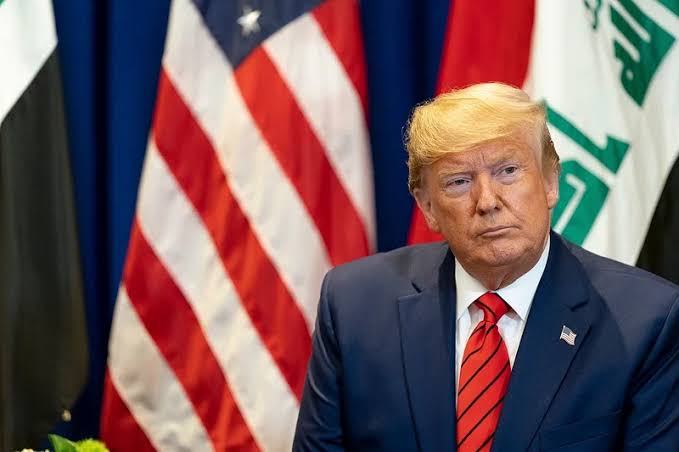On Wednesday, President Donald Trump surprised global markets by announcing a 90‑day suspension of many newly imposed tariffs while simultaneously ratcheting up duties on Chinese goods to a staggering 125 percent. The abrupt policy reversal comes amid mounting concerns over trade tensions, market volatility, and the potential for an economic downturn. Here’s a closer look at what this means for businesses, consumers, and the broader financial landscape.
A Tactical Trade Truce 2025
In a social‑media post that sent stock indexes soaring, Trump revealed that he had “authorized a 90‑day pause, and a substantially lowered reciprocal tariff during this period, of 10 percent.” By offering a temporary moratorium on duties affecting allies from Japan to Canada, the administration hopes to buy time for negotiations, reduce supply‑chain disruptions, and temper recession fears. Yet the simultaneous hike on Chinese imports—from 104 percent to 125 percent—underscores Washington’s determination to address the bilateral trade deficit and protect American industries from what the White House labels “unfair competition.”
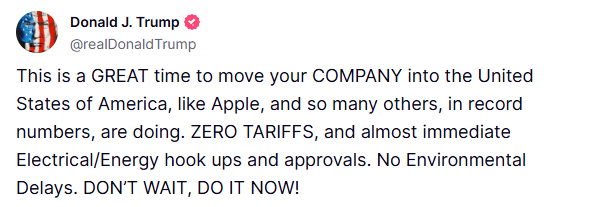
Immediate Market Impact
The response was swift. The Dow Jones Industrial Average and S&P 500 both rallied, while bond yields retreated from earlier highs, signaling a renewed appetite for risk. Wall Street traders, already battered by sharp swings in commodity prices and currency fluctuations, welcomed the prospect of a pause. Still, the increased levy on Chinese electronics, machinery, and auto parts has left CFOs scrambling to recalculate margins, adjust procurement strategies, and update financial forecasts.

Global Retaliation Intensifies
Before Trump’s announcement, Beijing and Brussels had unleashed countermeasures of their own. China’s finance ministry raised its duties on U.S. goods—from 34 percent to 84 percent—effective Thursday at 12:01 p.m. in Beijing. Meanwhile, the European Union moved forward with 25 percent tariffs on American motorcycles, fruit, and clothing, targeting iconic brands and consumer staples. Even Canada, a steadfast U.S. ally, implemented duties on steel and aluminum imports. These tit‑for‑tat measures have imperiled cross‑border supply chains, forcing logistics managers to reroute shipments and increasing freight costs.
A Strategic Pause or a Political Ploy?
Critics argue that the 90‑day suspension is more about political optics than meaningful reform. With the next presidential election looming, the president faces pressure to demonstrate progress on economic policy and reassure small‑business owners and homeowners that the mortgage market will remain stable. By framing the pause as a “negotiation window,” the administration aims to deflect accusations of damaging trade relations while keeping pressure on Beijing. Yet industry lobbyists caution that any delay must yield tangible results—or risk further erosion of investor confidence.
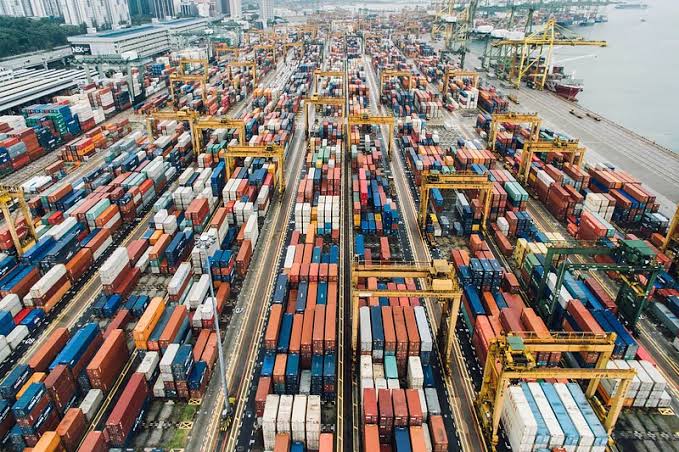
Impact on Key Industries
- Manufacturing and Construction: Companies relying on imported steel, copper, and aluminum can expect some relief during the suspension period. Builders, contractors, and real‑estate developers will watch raw‑material costs closely, as any tariff rollback can translate into lower costs for homebuyers and commercial projects.
- Automotive and Aerospace: Tariffs on parts and components have driven up production expenses. With an average duty now hovering above 20 percent across the board, automakers and aircraft manufacturers face difficult choices: absorb the added cost, pass it to consumers, or shift assembly lines abroad. The pause could help cushion price increases for new‑car loans and lease agreements.
- Technology and Electronics: U.S. consumers of smartphones, laptops, and networking equipment have already felt the sting of higher prices. A temporary reduction in reciprocal tariffs may ease inflationary pressures on consumer electronics, improve margins for retailers, and lower insurance premiums for inventory held in warehouses.
- Agriculture and Commodities: Farmers and grain exporters have borne the brunt of retaliatory duties, with soybean and corn shipments to China plummeting. The 90‑day window offers a chance to reopen dialogue, secure new export contracts, and stabilize commodity futures prices.
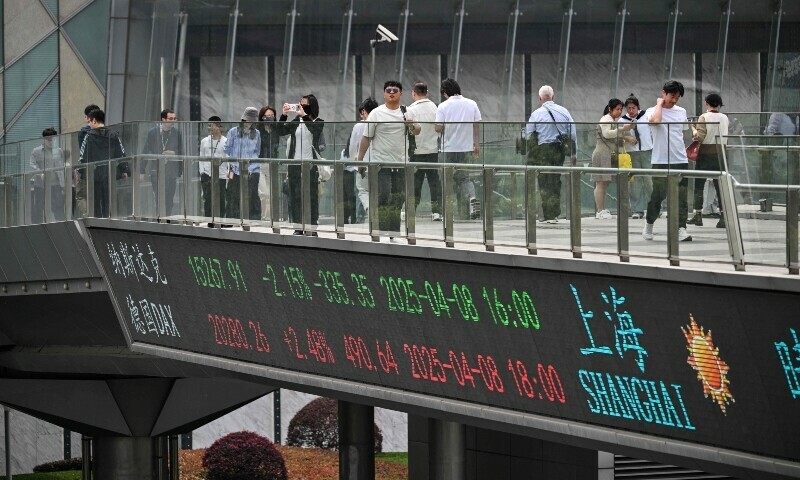
Navigating Legal Complexities
For multinational corporations, the shifting tariff regime underscores the importance of retaining top legal counsel and customs‑broker expertise. Trade attorneys and international tax advisors are now inundated with inquiries about compliance, classification codes, and potential injunctions. Companies are evaluating force‑majeure clauses in supplier contracts, reviewing letters of credit, and seeking guidance on mitigating customs‑duty exposure. The dynamic environment highlights the critical role of intellectual‑property protections and licensing agreements when tariffs threaten to disrupt global distribution networks.
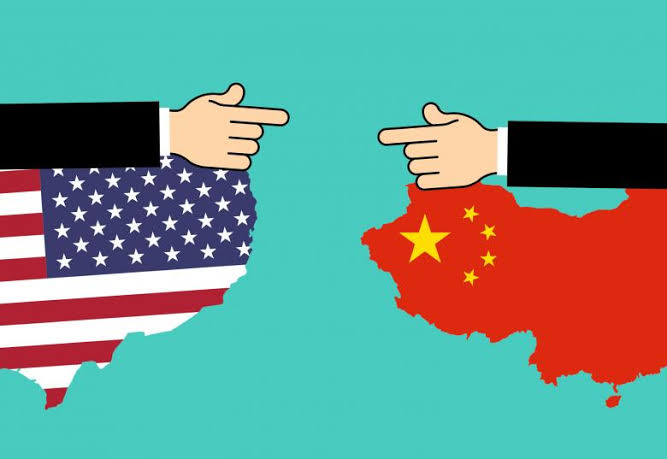
Broader Economic Implications
Economists warn that any tariff escalation, even a temporary reprieve, can stifle growth. Higher import costs feed into consumer‑price inflation, erode household purchasing power, and raise borrowing costs on credit cards and auto‑financing. The Federal Reserve, already monitoring labor‑market data and GDP projections, may face renewed pressure to adjust interest‑rate policy to counteract trade‑induced inflationary spikes. Meanwhile, commercial‑real‑estate investors and REIT managers must account for potential shifts in tenant demand and office‑occupancy rates if economic activity slows.
China’s Counterplay and Long‑Term Strategy
Beijing has repeatedly vowed to “fight to the end,” using a combination of tariff increases, export controls on rare‑earth elements, and blacklisting of select U.S. technology firms. China’s central bank has intervened to stabilize the yuan, while state‑owned enterprises explore alternative markets in Europe, Africa, and Southeast Asia. Some analysts view the pause as a strategic opportunity for China to pivot toward domestic consumption, invest in critical infrastructure, and accelerate innovation in sectors like artificial intelligence and electric vehicles. Yet the risk remains that prolonged trade friction could decelerate global supply‑chain integration and spur protectionist policies elsewhere.
The Path Forward
With the clock now ticking on the 90‑day truce, businesses and policymakers face a high‑stakes countdown. The White House has called on CEOs to relocate manufacturing to the United States to avoid future tariffs, promising “zero duties” and streamlined environmental reviews. Whether that incentive spurs tangible onshore investment remains to be seen. In the meantime, CFOs are updating budget scenarios, hedging currency risk, and exploring duty‑drawback programs to recoup costs.
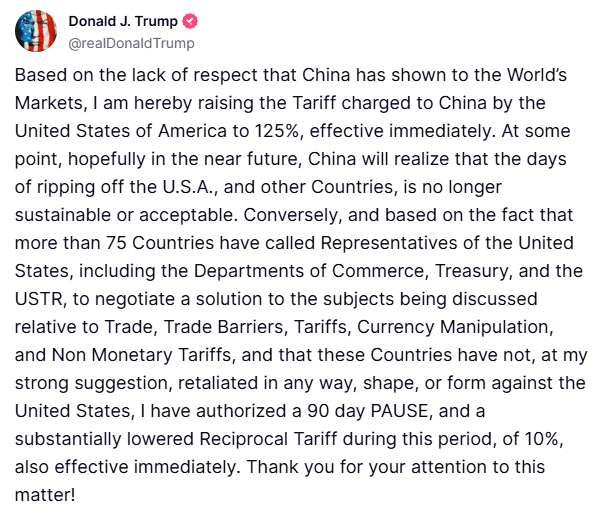
Conclusion
President Trump’s decision to simultaneously pause and escalate tariffs reflects the complex balancing act at the heart of modern trade policy. While the 90‑day suspension offers a fleeting reprieve for many sectors, the sharp increase in Chinese levies signals that the administration’s broader agenda remains unchanged. As markets digest the implications, one certainty emerges: in an era defined by economic uncertainty, agility, legal expertise, and strategic planning have never been more critical for businesses navigating the global marketplace. Whether this temporary pause leads to lasting agreements or simply prolongs the standoff will depend on the willingness of both sides to compromise—and on the resilience of the world’s interconnected economies.
